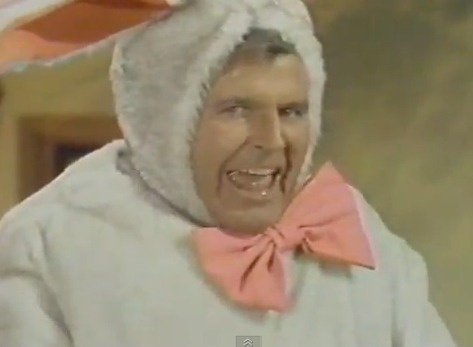Post by mikef6 on Nov 26, 2021 6:04:12 GMT
Tom Flynn in his book “The Trouble With Christmas” (Prometheus Books, 1993) discusses the origin of Christmas traditions. There is no doubt that the origins of Christmas begin in the pre-Christian fall and winter celebrations of Europe. Flynn gives a good survey of the different pre-Christian harvest and winter feasts in Europe. But most of how we celebrate the holiday today is post-Christian. Except inside churches, there is little to zero Christianity in the usual celebration of Christmas – and even some churches put up Christmas trees and have a “hanging of the greens” work day. There is already no “Christ” in Christmas.
Flynn has identified 6 eminent Victorians as the authors of the modern Christmas celebration. 5 old dead white males and a Queen.
1) Early 19th century writer Washington Irving (Rip Van Winkle, The Legend of Sleepy Hallow). In his “Sketch Book” from 1819 he has a section that describes an idealized picture of a typical English country house Christmas complete with Yule log, a warm fire, and loving family gathering around. Thing is, there was no “typical English country house Christmas.” Irving pulled most of it out of his…uh…ear. Yet that picture of a warm cozy family still dominates what we believe Christmas should be.
2) Charles Dickens. You knew he was coming didn’t you. It would be hard to overstate the importance of his 1843 book “A Christmas Carol” to a modern conception of Christmas. The whole idea of a season of giving and sacrifice was planted here. The story of a bad man learning The Real Meaning Of Christmas dates from here. The book also invented a popular slur against anyone who chooses to not observe Christmas or who likes to pare down the Christmas trappings: that person is a “scrooge.” Lastly, in England at the time a number of meats were appropriate for Christmas dinner in addition to turkey: Ham, goose, Boar’s head, etc. But after Scrooge took a turkey to the Cratchit household, turkey has dominated everywhere. Back in 2018 our son and lovely daughter-in-law visited is for the holidays. We asked his wife, who had been born and raised in the Czech Republic, what her family had for Christmas dinner. It was turkey.
3) Queen Victoria of England was a inadvertent inventor of Christmas. Her ancestry was German. Her husband was German. A decorated tree was a fixture of old German winter celebrations. She began setting up a decorated tree in Buckingham Palace during Christmas around 1840. In 1848 a glossy illustrated magazine did a flashy story on that year’s tree. Victoria was an extremely popular monarch. Her subjects became eager to celebrate the season the same as the Queen. Thus, the Tannenbaum spread through England like COVID 19 and not long after the New World.
4) Clement Clarke Moore, who put his name on someone else’s work, “A Visit From Saint Nicholas.” He managed to change Santa Claus from the stern St. Nicholas who left a lump of coal in the stockings of children who had been bad to the Jolly Old Elf with his flying reindeer lead sled.
5) Frank Church of the New York Sun newspaper who in the winter of 1897 was given the assignment to answer the letter from 8-year-old Virginia O’Hanlon who asked if there was really a Santa Claus. He wrote the answer that is reprinted (in part) most every year, the dreaded “Yes Virginia, there is a Santa Claus” column. To be fair, Church never intended this as an immortal and essential part of Christmas – he thought he was doing a puff piece. But that’s not what happened. Now, his little anti-scientific, anti-intellectual essay (just because we can’t see it, touch it, or perceive in any way, won’t mean it doesn’t exist) is now a part of a traditional Christmas.
6) Thomas Nast, the famous NYC illustrator. From 1882 to 1886, Nast returned to Santa Claus in Harper’s Magazine. It is the image that we all carry in our heads today.
So, the “traditional Christmas tradition” in its entirety, as we celebrate it today, all came together in the late 19th century. – about 130 years ago. The plaintive plea to “get back to the real meaning of Christmas” is a delusion of a glorious past that never happened. The complaint the Christmas is too commercial and secular is ridiculous because that is what modern Christmas has always been. Too many people have in their heads some nostalgic longing for an ancient time of Christmas spirituality that never existed. Black Friday is the ultimate expression of the Real Meaning Of Christmas.
Flynn has identified 6 eminent Victorians as the authors of the modern Christmas celebration. 5 old dead white males and a Queen.
1) Early 19th century writer Washington Irving (Rip Van Winkle, The Legend of Sleepy Hallow). In his “Sketch Book” from 1819 he has a section that describes an idealized picture of a typical English country house Christmas complete with Yule log, a warm fire, and loving family gathering around. Thing is, there was no “typical English country house Christmas.” Irving pulled most of it out of his…uh…ear. Yet that picture of a warm cozy family still dominates what we believe Christmas should be.
2) Charles Dickens. You knew he was coming didn’t you. It would be hard to overstate the importance of his 1843 book “A Christmas Carol” to a modern conception of Christmas. The whole idea of a season of giving and sacrifice was planted here. The story of a bad man learning The Real Meaning Of Christmas dates from here. The book also invented a popular slur against anyone who chooses to not observe Christmas or who likes to pare down the Christmas trappings: that person is a “scrooge.” Lastly, in England at the time a number of meats were appropriate for Christmas dinner in addition to turkey: Ham, goose, Boar’s head, etc. But after Scrooge took a turkey to the Cratchit household, turkey has dominated everywhere. Back in 2018 our son and lovely daughter-in-law visited is for the holidays. We asked his wife, who had been born and raised in the Czech Republic, what her family had for Christmas dinner. It was turkey.
3) Queen Victoria of England was a inadvertent inventor of Christmas. Her ancestry was German. Her husband was German. A decorated tree was a fixture of old German winter celebrations. She began setting up a decorated tree in Buckingham Palace during Christmas around 1840. In 1848 a glossy illustrated magazine did a flashy story on that year’s tree. Victoria was an extremely popular monarch. Her subjects became eager to celebrate the season the same as the Queen. Thus, the Tannenbaum spread through England like COVID 19 and not long after the New World.
4) Clement Clarke Moore, who put his name on someone else’s work, “A Visit From Saint Nicholas.” He managed to change Santa Claus from the stern St. Nicholas who left a lump of coal in the stockings of children who had been bad to the Jolly Old Elf with his flying reindeer lead sled.
5) Frank Church of the New York Sun newspaper who in the winter of 1897 was given the assignment to answer the letter from 8-year-old Virginia O’Hanlon who asked if there was really a Santa Claus. He wrote the answer that is reprinted (in part) most every year, the dreaded “Yes Virginia, there is a Santa Claus” column. To be fair, Church never intended this as an immortal and essential part of Christmas – he thought he was doing a puff piece. But that’s not what happened. Now, his little anti-scientific, anti-intellectual essay (just because we can’t see it, touch it, or perceive in any way, won’t mean it doesn’t exist) is now a part of a traditional Christmas.
6) Thomas Nast, the famous NYC illustrator. From 1882 to 1886, Nast returned to Santa Claus in Harper’s Magazine. It is the image that we all carry in our heads today.
So, the “traditional Christmas tradition” in its entirety, as we celebrate it today, all came together in the late 19th century. – about 130 years ago. The plaintive plea to “get back to the real meaning of Christmas” is a delusion of a glorious past that never happened. The complaint the Christmas is too commercial and secular is ridiculous because that is what modern Christmas has always been. Too many people have in their heads some nostalgic longing for an ancient time of Christmas spirituality that never existed. Black Friday is the ultimate expression of the Real Meaning Of Christmas.









 You might have a point. I never thought about it like that. Jesus did throw out kosher! It's like throwing a bucket of pig's blood on a Muslim!
You might have a point. I never thought about it like that. Jesus did throw out kosher! It's like throwing a bucket of pig's blood on a Muslim!